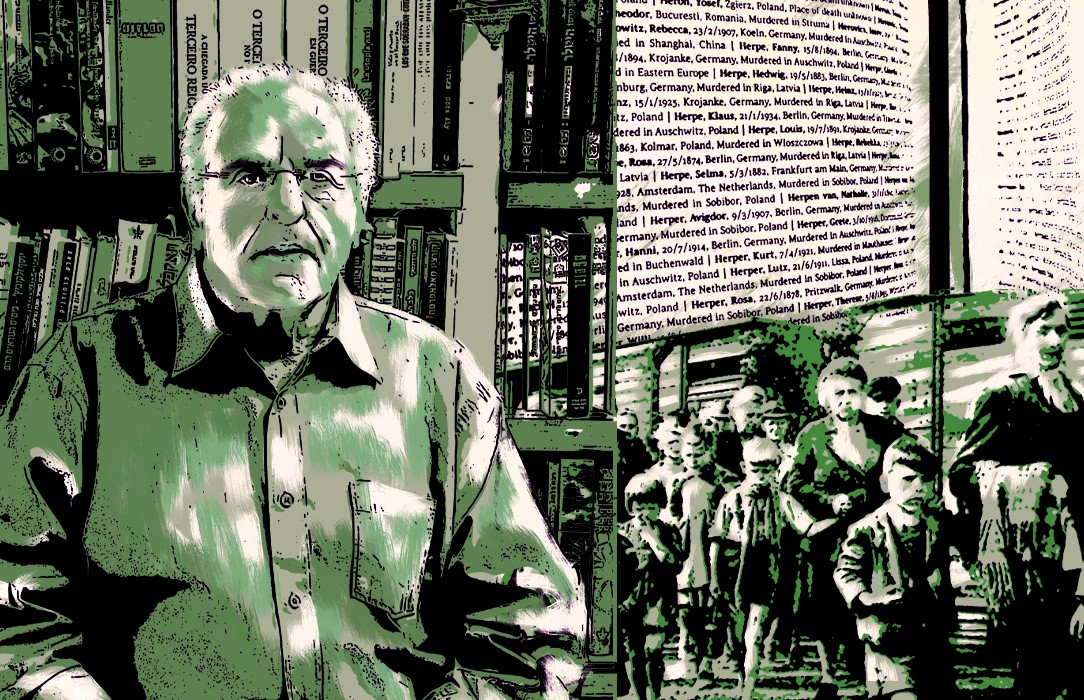Among the various books found in Oswaldo Cruz’s library, of special note are a set of titles on yellow fever. A total of 38 books, reports, and papers relate to the scientific debate surrounding transmission of the disease, waged at the turn of the nineteenth to twentieth centuries.
Read more on the Oswaldo Cruz Collection:
The Oswaldo Cruz Collection: Scientist’s personal library reveals an interest in World War I
Included is a reference to a seminal author involved in the debate, Cuban epidemiologist Carlos Juan Finlay Barres (1833-1915), who defended the unprecedented—and thus controversial—hypothesis that yellow fever was transmitted by the mosquito Stegomya fasciata (now called Aedes aegypti). In the same area, the library holds works by Walter Reed (1851-1902) and William Gorgas (1854-1920), U.S. army doctors who made decisive contributions to proving Finlay’s theory.
Reed and his team of U.S. Army bacteriologists—James Carroll, Aristides Agramonte, and Jesse Lazear—were sent to Cuba in June 1900 to study the causes of the disease and identify ways to curtail the yellow fever epidemic then killing U.S. soldiers. The island had been occupied by the United States since 1898, during the Cuban War of Independence from Spain.
The experiments conducted by the Reed Commission, in which humans were intentionally exposed to yellow fever, confirmed mosquito transmission. Led by General William Gorgas, a subsequent public health campaign based on patient isolation and mosquito extermination brought the illness under control in Havana within six months.
This work ran parallel to efforts by three researchers on the other side of the Atlantic whose work is also part of Cruz’s library: Scotland’s Patrick Manson (1844-1922), France’s Alphonse Laveran (1845-1922), and Britain’s Ronald Ross (1857-1932). The three men were united by their belief that the mosquito played a role as a transmitter of human diseases and their desire to prove the hypothesis.
In 1878, Manson—now known as the founder of tropical medicine—was the first to show that a parasite that causes a human disease could infect a mosquito, which then transmits the malady. These findings were based on his research on the filarial worm, causal agent of elephantiasis.
The other two doctors followed a similar path in their studies on malaria. In 1880, Laveran, a French Army physician, identified the causal agent of malaria, a parasite of the genus Plasmodium. Not long after, as he progressed with his research, he began defending the hypothesis that this protozoan lodges in the bodies of mosquitoes. Ross conducted his research in India. In 1897, upon dissecting stomach tissue from an Anopheles mosquito that four days earlier had fed off the blood of a malaria patient, he identified the parasite of the disease, thereby demonstrating the role of mosquitoes in transmitting parasites of the disease to humans. Through further research, in 1898 he showed that the mosquito could serve as an intermediary host for avian malaria. Their findings won both scientists Nobel Prizes in Medicine, Ross in 1902 and Laveran in 1907.
Oswaldo Cruz, reader of works on yellow fever
The works on yellow fever found in Cruz’s personal library form a cohesive set of references on the disease at the turn of the twentieth century. They reveal the scientific and intellectual backdrop against which Cruz molded his yellow fever campaign in Rio de Janeiro, where a series of deadly epidemics had raged since the mid-nineteenth century.
As head of the General Directorate of Public Health, and with the political support of then-president Rodrigues Alves, Oswaldo Cruz convinced Congress to approve his public health plan for the federal capital in December 1903. He established the Special Yellow Fever Prophylaxis Service, which grounded its work on the method used by Gorgas in Cuba: patient isolation and surveillance of people without immunity (children and foreigners), carried out by “sanitary police,” along with the extermination of mosquitoes by insect-fighting brigades.
The adopted measures fueled a public outcry. Cruz was the brunt of criticisms in his role as head of public health, and physicians engaged in a fierce debate over the theory of mosquito transmission. Just as in Cuba, however, the measures proved effective. By 1904, the disease had been brought under control, and from then on the mortality rate declined steadily, reaching zero in 1909.






